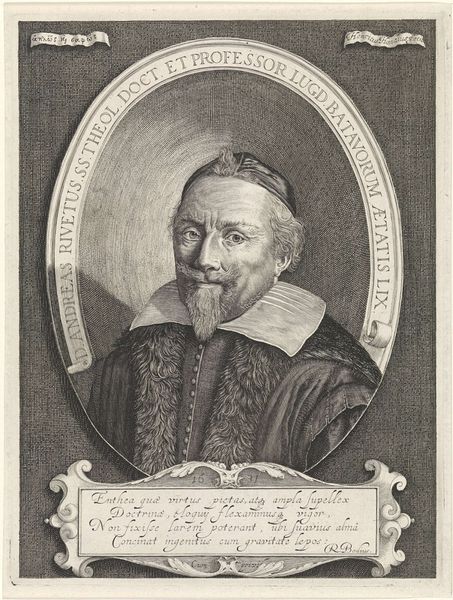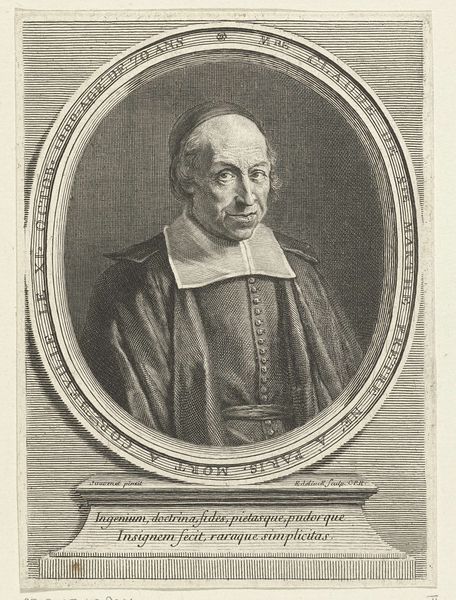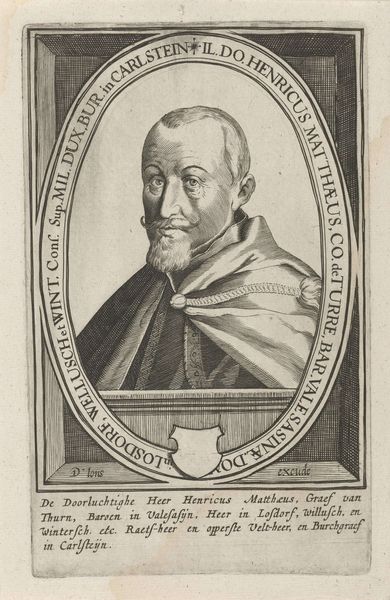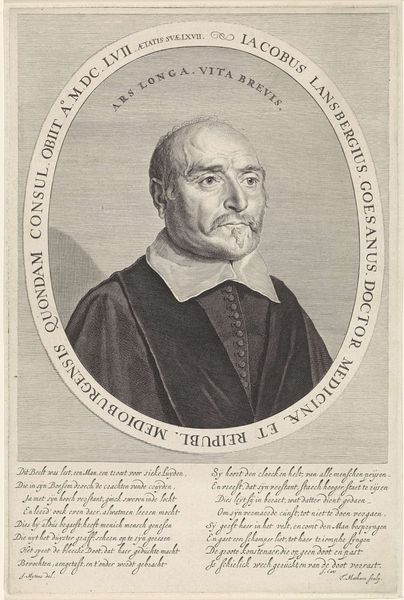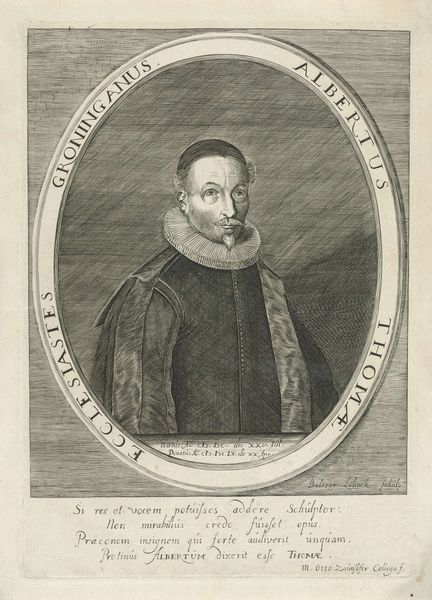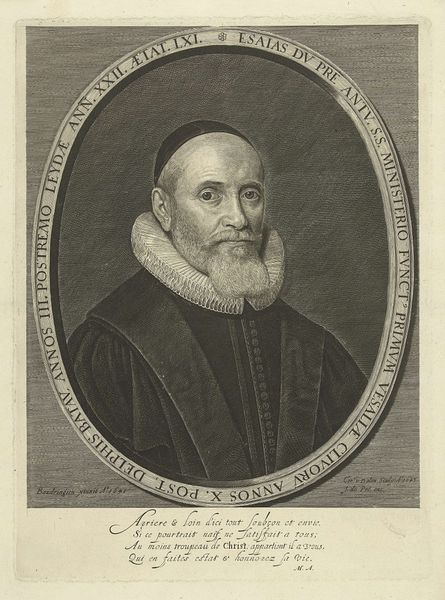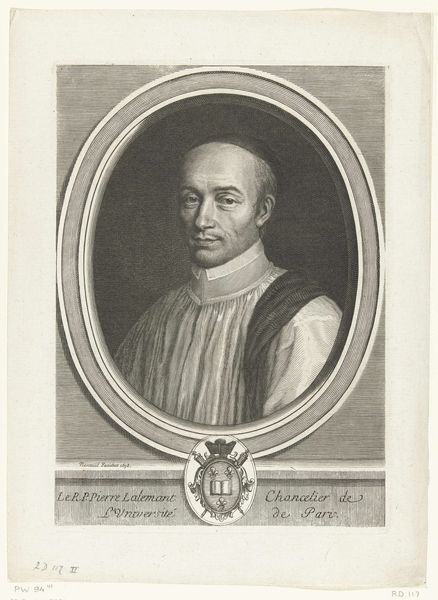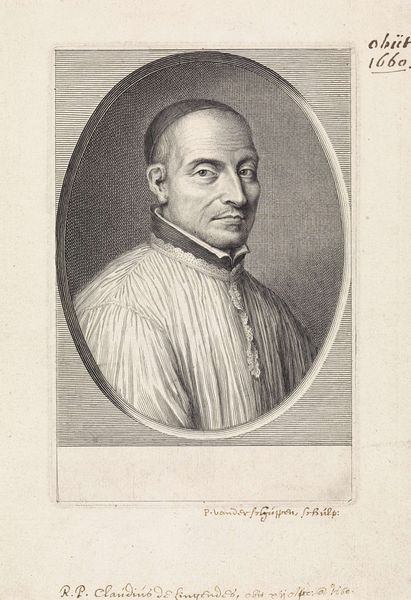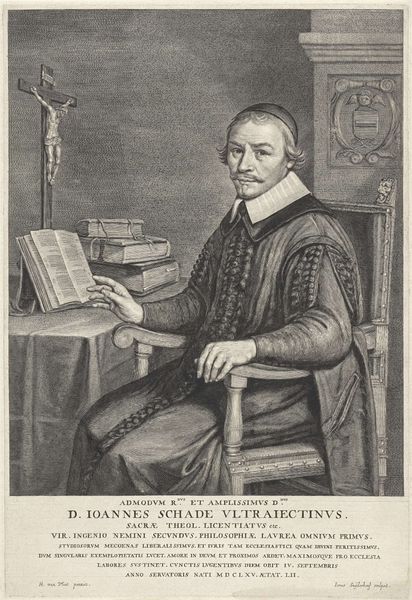
engraving
#
portrait
#
baroque
#
old engraving style
#
figuration
#
line
#
portrait drawing
#
engraving
Dimensions: height 181 mm, width 137 mm
Copyright: Rijks Museum: Open Domain
Editor: This is a portrait of Pierre Gassendi, an engraving by Cornelis Visscher from between 1638 and 1658. The subject's somber expression and the linear precision of the engraving give it a very dignified and intellectual feel. What do you make of this piece? Curator: The image radiates a powerful sense of intellectual presence, doesn't it? Gassendi was, of course, a prominent philosopher and scientist. Consider how Visscher uses line, especially around the eyes and mouth. What emotions do those details evoke in you? Editor: I see intelligence, definitely, but also maybe a hint of weariness, or… skepticism? Is it common to see that sort of conflicting message in portraits of intellectuals? Curator: It's interesting you see weariness. The slightly downturned mouth and those etched lines suggest experience and perhaps contemplation on complex matters. That perceived skepticism might mirror Gassendi's own questioning of established dogma. The symbols here—his clerical garb, the text below—all contribute to a narrative of scholarly life. The gaze, directed slightly off-center, engages the viewer but maintains a certain distance, protecting intellectual privacy. What else does it trigger in you? Editor: Thinking about it now, the way the image is framed almost presents him as a figure of study, a specimen. And yet, the slight imperfections in the lines, almost like sketch lines, bring a humane feel to it all. Curator: Precisely. It reminds us of the complex interplay between the individual and the roles they occupy. That balance of humanity and high intellectualism is key to decoding its sustained cultural significance. Editor: That makes the portrait so much more dynamic than I initially thought. Thanks for helping me see it.
Comments
No comments
Be the first to comment and join the conversation on the ultimate creative platform.



